What's New
Displaying results 1831 - 1840 of 4914

Resource | Publications,
People and families have been arriving in Narneen for what seems like forever. Everyone is different, with different habits, ways of talking and dressing. They have many stories about how they came to be here – some lost their homes during wars, others lost their land and crops to drought and some came to Narneen in search of a better life. This is the story of two of Narneen’s adolescents, Akilah and Carlos, who embarked on an adventure and discovered the importance of the role that all children and adolescents can play in their communities.
AA-HA! Stands for Accelerated Action for the Health of Adolescents. It also means “Ah, now I understand!”. Every adolescent is unique, with diff erent needs and concerns. AA-HA! are suggestions to governments to help them to make sure YOU understand your health-related rights, and that you are helped to have the best possible chance to survive, thrive, and be in a position to help to transform the society you live in.
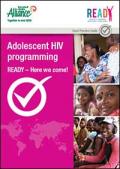
Resource | Guidelines,
A greater understanding of HIV in high prevalence countries has increased awareness of the need to prioritise adolescents in HIV prevention, treatment, care and support. At the same time, a growing recognition that adolescence is a distinct time of life has focused attention on adolescents’ different needs. Adolescents are now included as a separate target group in global and national strategies.
This Good Practice Guide was developed to offer programme managers and service providers concrete implementation guidance and support as they seek to address adolescents’ needs more effectively. It is intended to shape a provider’s approach and work so that adolescents living with HIV and those from key populations can obtain the services they need and live healthy, productive lives. The Good Practice Guide is shaped by the principles of the Positive Health, Dignity and Prevention Framework, with adolescents and young people at the centre, managing their own health and well-being.
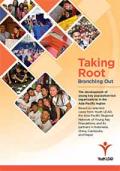
Resource | Publications,
At national level, some of Youth LEAD’s focal points in the Asia-Pacific region have gone on to establish networks of their own, participate in decision-making, and have brought about positive change for their communities. This report attempts to capture the development phase of young key population-led organizations as selected among Youth LEAD’s focal points largely funded as the sub-grantees of the Robert Carr civil society Networks Fund (RCNF), observe the varying levels of success of this process, and identify common elements and challenges. Furthermore, this report aims to produce recommendations for donors and stakeholders wanting to support a comprehensive response to HIV and keen to engage with young key populations (YKP). Finally, recommendations from this report can help guide YKP in establishing networks for themselves and their peer, in the process promoting and exercising the right to equal participation for YKP.
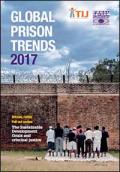
Resource | Publications,
The Global Prison Trends 2017 report by Penal Reform International, in collaboration with the Thailand Institute of Justice, provides a window to one of the least visible and least accessible government sectors, while highlighting some of the most intractable correctional issues for policy makers across the world. Prison overcrowding, inhumane treatment and the rising number of vulnerable groups of prisoners are problems that have long been listed as primary challenges when it comes to prison management. Yet the problems still persist in many parts of the world today, necessitating a new perspective and approach for criminal justice reforms.
With 2017 marking the second year since the adoption of the SDGs, in addition to the global overview of current prison situations, the Special Focus section of this report focuses on the links between the SDGs and effective criminal justice systems and discusses the ways forward.
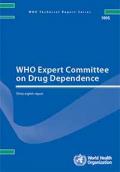
Resource | Publications,
This report documents the thirty-eighth meeting of the World Health Organization (WHO) Expert Committee on Drug Dependence (ECDD) that took place in Geneva, Switzerland from 14 to 18 November 2016.

Resource | Publications,
UNAIDS has called on all countries to harness the next several years (until 2020) as a key window of opportunity for rapidly scaling up the HIV response in three main areas: HIV prevention, HIV testing and HIV treatment. This Fast-Track approach—endorsed by the United Nations (UN) General Assembly in the 2016 Political Declaration on Ending AIDS—requires maximizing existing tools in order to quicken the pace of progress to achieve specific targets and end the AIDS epidemic as a public health threat by 2030.
This document offers guidance on why and how efforts to Fast-Track HIV prevention, testing and treatment services can and should be grounded in human rights. Beyond being an imperative in themselves, human rights principles and approaches are critical to addressing barriers to HIV services and to achieving HIV targets. Human rights principles and approaches will help maximize the reach and impact of HIV prevention, testing and treatment programmes. They also will help address potential human rights challenges and prevent abuses that may occur in the context of urgent efforts to Fast-Track the achievement of HIV prevention, testing and treatment targets.
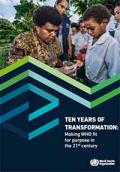
Resource | Publications,
Over the past decade, extraordinary progress has been made in transforming the World Health Organization (WHO), bringing it into the 21st century and positioning it not only as the world’s public health agency, but as forward-looking and fit-for-purpose. By developing innovative leadership, managerial structures and systems, the changes that WHO has undergone have resulted in increased effectiveness, efficiency, responsiveness, transparency and accountability. Above all, these reforms have been grounded in robust metrics to measure performance and have been integrated into organization-wide systems and processes.
The Organization has evolved fundamentally while weathering some of the greatest health crises the modern world has seen. Anyone walking in the doors at WHO today finds an agency that is revitalized, ready for the challenges of this century, operating smoothly across its three levels – headquarters, regions and countries – and squarely engaged with partners and governments to tackle this era’s health challenges. This report tells the story of that transformation, from 2007 through to the current day.
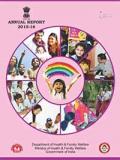
Resource | Publications,
This Annual Report outlines the activities of the Department of Health & Family Welfare and of schemes implemented over the year 2013-14.
The obligation of the Government to ensure the highest possible health status of India's population and to ensure that all people have access to quality health care has been recognized by a number of key policy documents.
The Ministry of Health & Family Welfare is implementing various schemes, programmes and national initiatives to provide universal access to quality healthcare. The approach is to increase access to the decentralized public health system by establishing new infrastructure in deficient areas and by upgrading the infrastructure in the existing institutions.

Resource | Publications,
The establishment of the ASEAN Business Coalition on HIV-AIDS (ASEAN-BCA) supports the building of a people-oriented ASEAN as called for in the ASEAN Charter, and implementation of the ASEAN Labour Ministers’ Work Programme 2010-2015.
As the majority of people living with HIV in ASEAN Member States are of productive working age, this adversely gives impacts on the well-being of millions of workers and their families, and on the productivity of nations and their enterprises. Considering this, the business community, which is usually represented by employers’ associations, shares the responsibilities to prevent and protect their workers from HIV and AIDS-related problems and discrimination. In partnerships with stakeholders, the business community would be able to build networks and mobilise resources to prevent and control HIV and AIDS in the workplace with greater results. Against this backdrop, the ASEAN-BCA is developed.
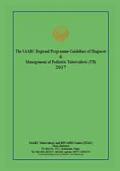
Resource | Guidelines,
The World Health Organization (WHO) estimates that childhood TB accounts for 6% to 10% of all TB cases worldwide each year. In countries with a high rate of TB disease, children account for as much as 40% of all new TB cases.
In 2014, there were an estimated 3.1 million incident cases of TB in the SAARC Region, equivalent to 185 cases per 100000 populations and estimated deaths due to TB was 0.37 million. This carries 32% of the global burden of TB incidence. Four of the eight Member Countries in the Region are among the 22 high burden countries, with India accounting for 23 % of the world’s TB cases. Among 3.1 million incident TB cases, 2.1 million are notified new and relapse cases. Published data about the epidemiology of TB in children is scarce in SAARC Region, though it is considered one of the most common causes of childhood morbidity.
The guideline focuses on being able to provide guidance in child TB to health workers working at the primary or secondary level.





